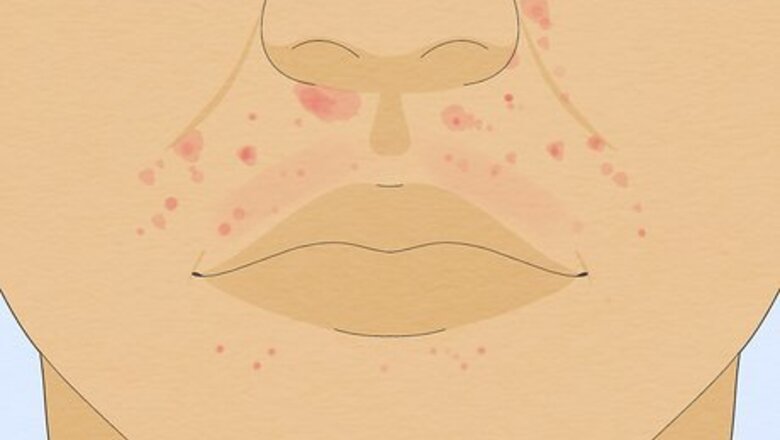
views
Soothing Contact Rashes
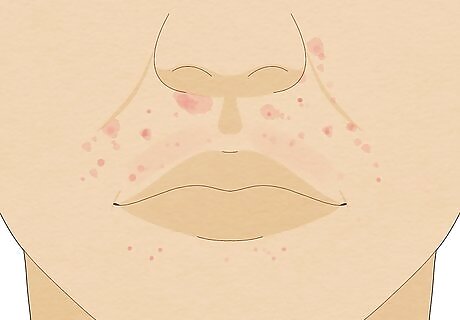
Determine if you have contact dermatitis. Contact dermatitis can occur when your skin is damaged or irritated by something, such as an application of hot wax. You may experience redness, itchiness, bumps, or blistering if the wax was too hot or the incorrect consistency when applied. If you experience swelling, tenderness, or a burning sensation, discontinue home waxing and consider getting waxed by a professional instead.

Use a cold compress. Soothe your skin immediately after waxing by applying an ice pack. For more long-term relief, wet a washcloth with cold water and apply it to the irritated skin for 15-30 minutes at a time. Repeat this treatment several times throughout the day, as needed. Do not apply ice to your skin for longer than 20 minutes at a time. After removing the ice pack, wait until your skin has warmed up and normal sensation has returned before re-applying.
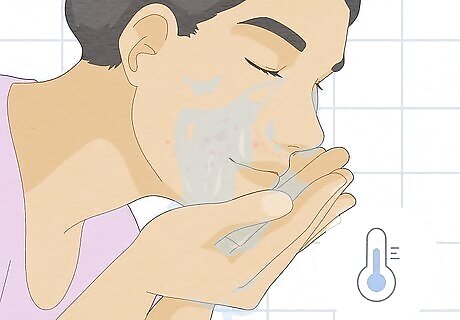
Cleanse with cool water and gentle cleansers. Soothe your face by washing it gently in cold water. Use an oatmeal-based cleanser, or mix 2 tablespoons (30 ml) of baking soda with 1 tablespoon (15 ml) of water to create a gentle DIY cleanser. Cleansers made from colloidal oatmeal have anti-inflammatory properties, so they are especially helpful for calming irritated skin. Baking soda gently cleanses your skin and provides relief from itching.
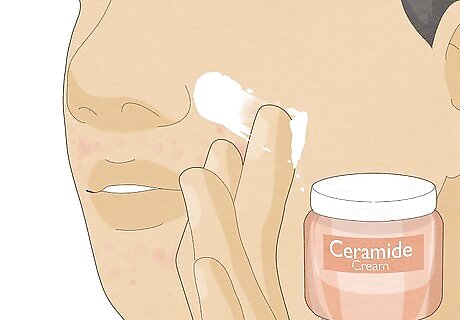
Moisturize your skin. After washing your face, use a gentle, unscented moisturizer on the irritated skin. Look for a moisturizer that is free of dyes, perfumes, parabens, and oils. Apply the moisturizer while your face is still damp. Moisturizers containing ceramide may be especially helpful for treating contact dermatitis.
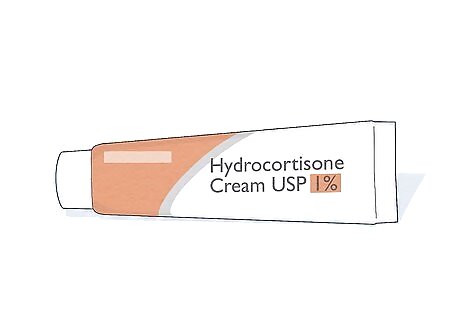
Apply a steroid ointment. Try applying an over-the-counter steroid lotion or ointment, such as 1% hydrocortisone cream, once or twice a day for up to 4 weeks. If an over-the-counter ointment is not effective, your doctor may be able to prescribe a stronger topical treatment or an oral corticosteroid.
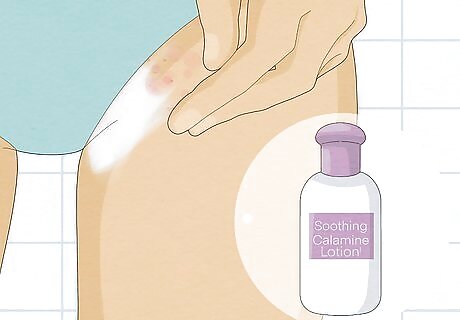
Put on some calamine lotion or ointment. Calamine lotion can soothe itching and irritation caused by contact dermatitis. You can use calamine lotion as frequently as needed to relieve your itching. Calamine works in part by drying out the irritated skin, so you may need to moisturize after use. Calamine lotion is most effective when you apply it right after washing your face, while your skin is still damp. If you wish, you can mix the calamine lotion with your moisturizer and apply both at once.

Avoid scratching. Your rash may be very itchy, but it is important to avoid scratching. Scratching the rash will make the irritation worse. Trim your fingernails and/or wear gloves or socks on your hands while you sleep to make it harder for you to scratch yourself.
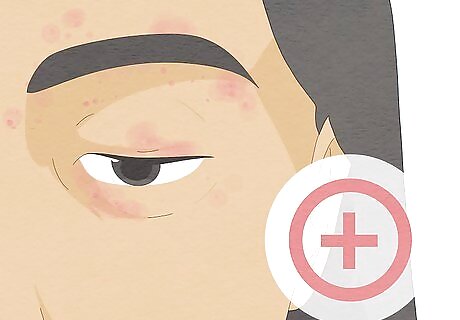
See your doctor if the reaction is severe. If you have a serious skin reaction after waxing, or if the rash does not respond to home remedies and over-the-counter medications, you may need to see a doctor or dermatologist. Make an appointment with your doctor if: The rash is very painful, or so uncomfortable that it keeps you from sleeping or going about your daily activities. The rash does not get better within three weeks. The rash spreads beyond the area affected by the waxing. You get a fever or blisters with pus. Your lungs, eyes, or nose feel irritated.
Treating Folliculitis
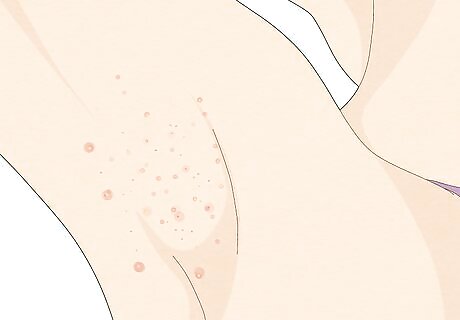
Determine if you have folliculitis. Folliculitis happens when your hair follicles become infected, or when a hair grows in under the skin instead of emerging from the follicle (ingrown hair). You may have folliculitis as a result of waxing if: You have red bumps or pimples around your hair follicles in the waxed area. Your skin is red, tender, or inflamed. Your skin itches or burns.
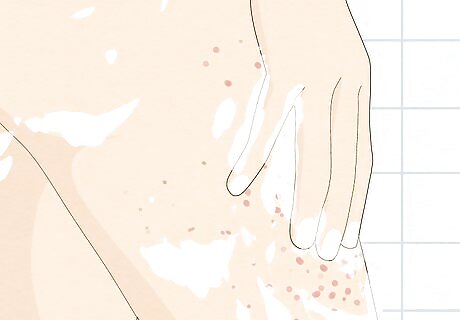
Cleanse your skin. Gently clean your face with hot (but not scalding) water and a mild anti-bacterial facial cleanser. Make sure to use a fresh, clean washcloth every time. Wash your face twice a day. Pat dry with a clean towel when you are done. Look for cleansers free of dyes, perfumes, and parabens. Cleansers containing tea tree oil may be helpful in treating and preventing folliculitis.
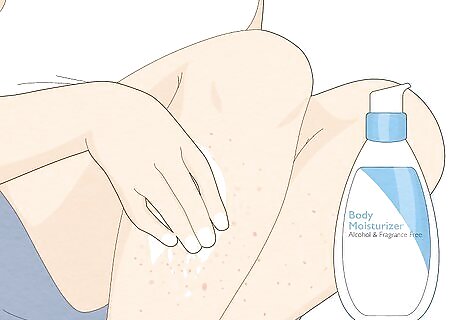
Moisturize your skin after washing. Use a gentle moisturizer, free of dyes, perfumes, and parabens. Use gentle lotions formulated for sensitive skin, such as Cetaphil or Lubriderm.
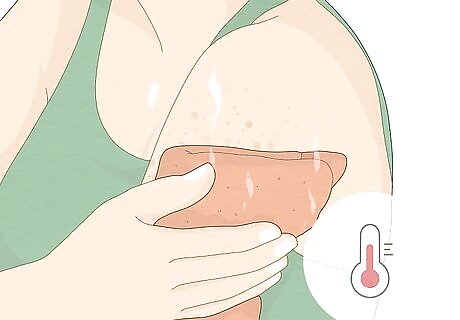
Use a warm compress. Soak a soft washcloth in warm water and then wring the washcloth out. Apply the compress to the rash 3-6 times per day, for 10 minutes at a time. This will help reduce inflammation, and can also help drain any pustules or blisters.
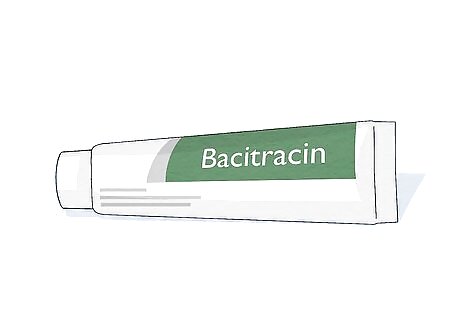
Apply an over-the-counter antibiotic ointment. Treat the area with an antibiotic cream or ointment, like bacitracin or triple-antibiotic cream. Follow the directions on the package carefully, or ask your doctor for advice about how often to apply.
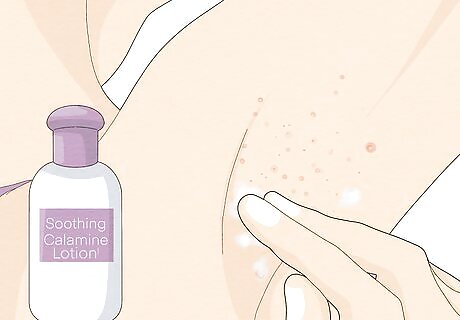
Put on an itch-soothing lotion. Oatmeal-based anti-itch lotions or calamine lotion are good choices for soothing folliculitis. Avoid relieving itchiness with hydrocortisone creams, as they may cause fungal infections.
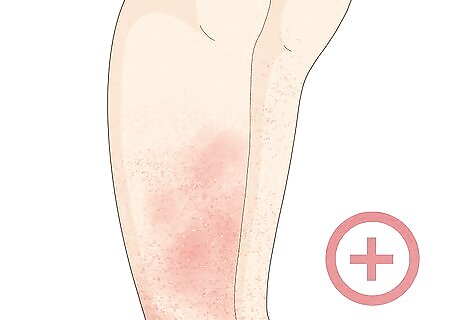
See a dermatologist if you have severe folliculitis. If your folliculitis rash is causing you a lot of pain, spreads, or does not go away with home care after a few days, see your dermatologist. The dermatologist may remove ingrown hairs and/or give you an oral or topical prescription if the folliculitis is caused by a fungal or bacterial infection. They may also be able to give you medication to reduce inflammation. If you have a fungal or bacterial infection, don’t use a washcloth that you use on your face on any other part of your body. This may make the infection spread.
Prevention Tips
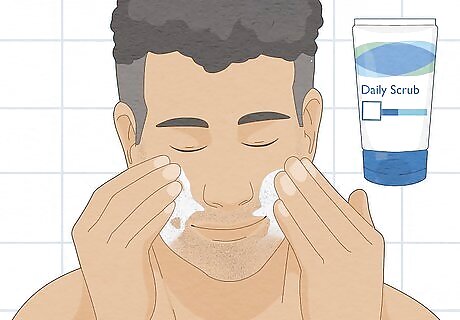
Exfoliate the night before waxing. Gently exfoliating before a wax can help prevent ingrown hairs and folliculitis. The day before you go in for a wax, wash your face with a mild facial exfoliant. Don’t scrub hard – just gently massage your face with your fingertips or a clean washcloth, using circular movements.
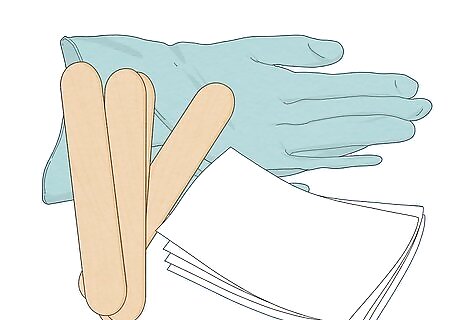
Use clean waxing equipment every time. Re-using waxing applicators, or failing to properly sanitize waxing equipment, can spread bacteria, fungal infections, and even viruses that can cause rashes. Always wash your hands and face before waxing, and never double-dip a waxing applicator. If you get waxed at a salon, make sure the technician wears gloves and uses sterile, properly stored equipment.
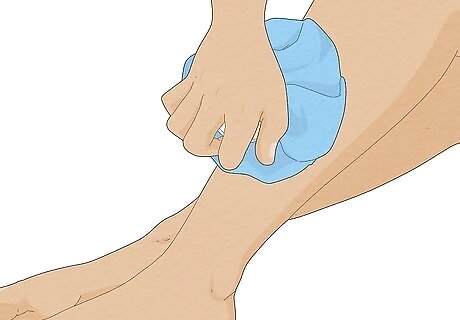
Apply a cold pack immediately after waxing. Using an ice pack or cold compress on the waxed area for 15-20 minutes immediately after you wax can help soothe your skin. Cooling your skin will also close up your pores and follicles, and prevent bacteria from getting in. An aloe-based after-wax cooling gel can also soothe irritated skin and help prevent bumps and breakouts.
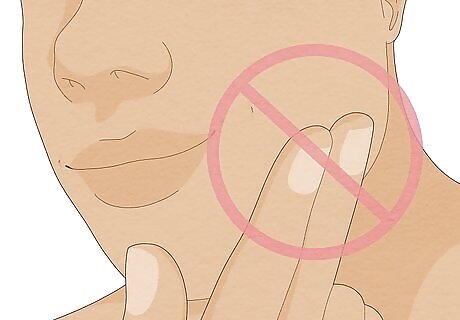
Avoid touching the waxed area. Although it is tempting to feel your smooth, freshly-waxed skin, too much touching can irritate the skin and introduce bacteria. Don’t touch your skin more than you have to (e.g., for washing or applying moisturizers) until it has had a couple of days to heal.
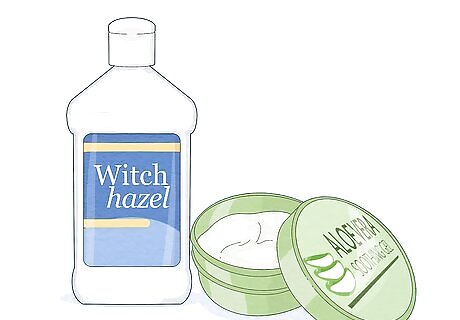
Use an oil-free moisturizer. Before and after waxing, use a gentle moisturizer that is free from dyes, perfumes, and oils. These ingredients can irritate your skin and clog your pores. Use a gentle moisturizer like aloe or witch hazel instead.
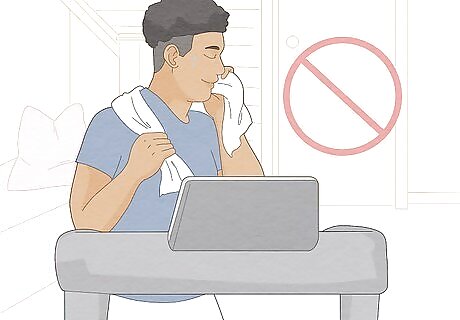
Avoid working out right before or right after waxing. Excessive sweating can clog your pores, irritate your skin, and contribute to breakouts. If you need to work out, do so well before you wax, or wait until your skin has had several days to heal after waxing.
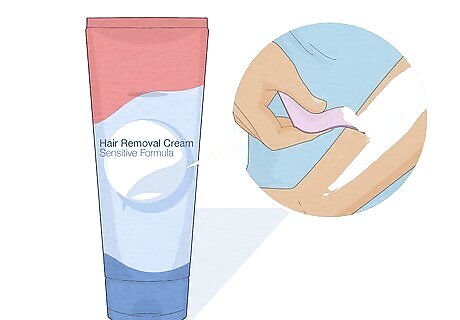
Try an alternative to waxing. If waxing regularly causes you to develop a rash or break out, you may need to consider a different hair-removal method. Try a depilatory or hair-removal cream designed to be safe for your face, or get a consultation to find out if you are a good candidate for laser hair removal. Laser hair removal is not a good option for shaping your eyebrows. Use a hair removal cream that is designed for use with eyebrows, or try another method, such as plucking.

















Comments
0 comment